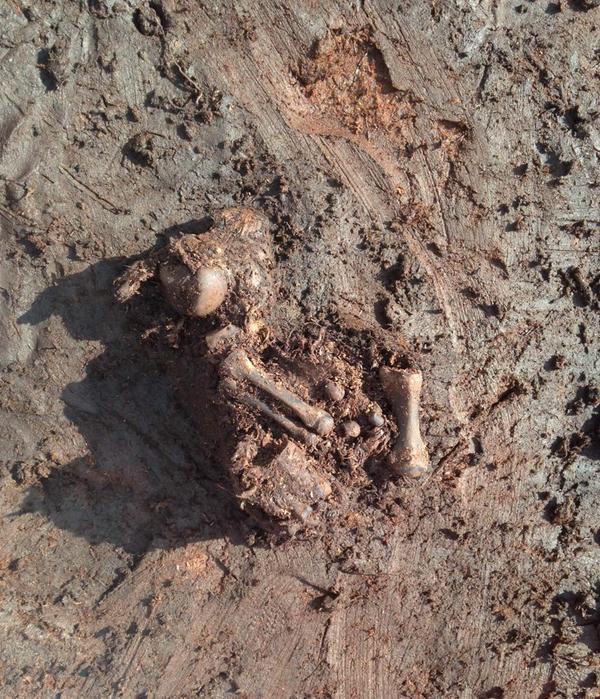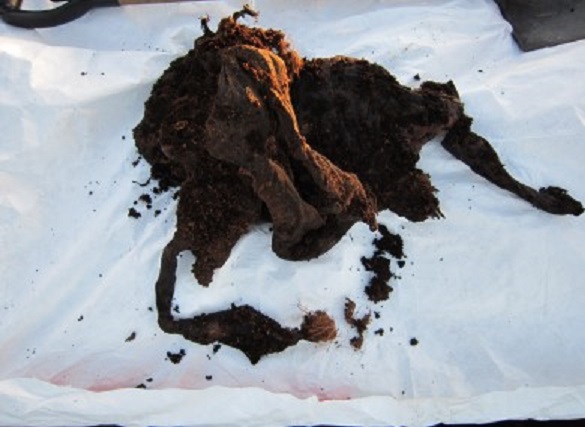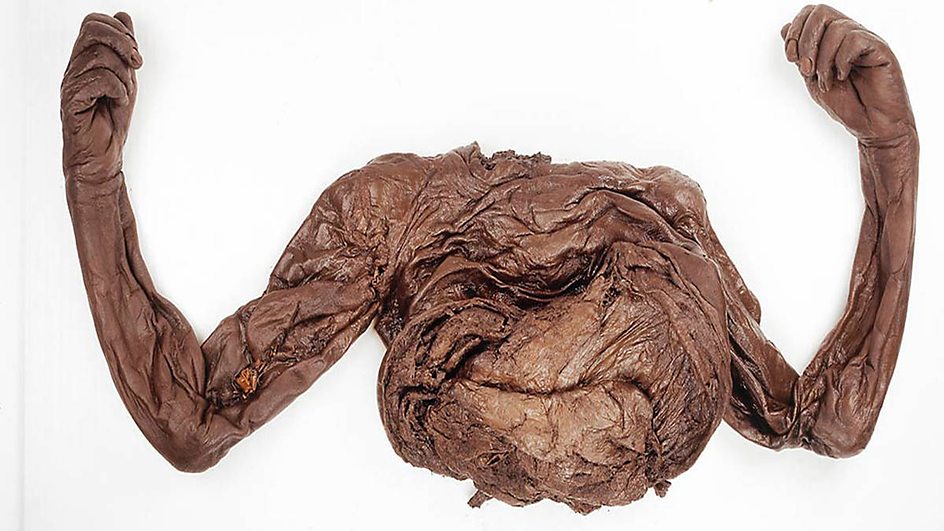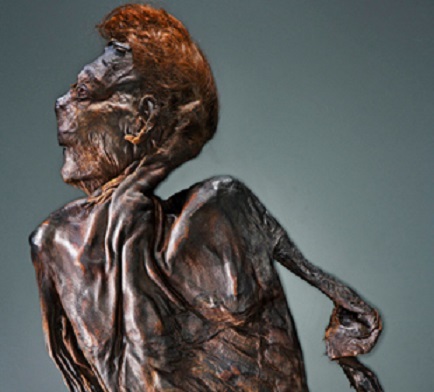
Exciting news. The partial remains of a bog body has been uncovered in Rossan bog in Co. Meath. The find was discovered by Bord na Móna workers and subsequently excavated by a team of archaeologists, led by Maeve Sikora of the National Museum of Ireland. Although as yet undated the remains were found in an area that has previously produced bog body remains (Moydrum Man) that were radiocarbon dated to the Early Iron Age (700-400 BC).

This latest addition to growing a corpus of Irish bog bodies will hopefully reveal as much information as two recent peat land discoveries. These aforementioned bog bodies, Old Croghan man and Clonycavan man, form the centre piece of the excellent Kingship and Sacrifice display at the National Museum of Ireland. What is striking about these remains is their fantastic state of preservation, something which is characteristic of bog bodies in general. This is primarily due to the cold, acidic, oxygen-free conditions that persist beneath peat bogs and which prevent decay and mummify human flesh.

Old Croghan man was found in a bog beneath Croghan Hill in Co. Offaly and based on radiocarbon dating he died sometime between 362 BC and 175 BC . He was extremely tall measuring 6ft 6 in height and had well manicured hands suggesting that he was not used to manual labour. His last meal (analysed from the contents in his stomach) consisted of cereals and milk . However, he was shown to have had a meat rich diet for at least the 4 months prior to this (based on analysis of his nails). Clonycavan man, in contrast, was much smaller in stature, measuring just 5ft 2 in height. He was recovered from a bog in Co. Meath and only his upper torso and head survived. The remains were radiocarbon dated to between 392 BC and 201 BC and, unusually, his hair was spiked with pine resin (a very early form of hair gel). Furthermore, the trees from which the resin was sourced only grow in Spain and south-west France, indicating the presence of long distance trade routes.

Both men had been subjected to gruesome deaths, suggesting that they may have been ritually tortured and murdered. Old Croghan man had holes cut in his upper arms through which a rope of hazel withies was threaded in order to restrain him. He was then stabbed, his nipples sliced, before finally being cut in half across his torso. Similar overkill was also seen on the Clonycavan bog body. He had been disembowelled and struck three times across the head with axe and once across the body. This brutality is not confined to Irish bog bodies and has been paralleled on human remains from British and continental bogs. For example, the Lindow man bog body, displayed at London’s British Museum, was struck twice on the head, garroted, and had his throat cut.
The reasons behind these bog body killings remains uncertain but Ned Kelly, formerly of the National Museum of Ireland, has suggested a very interesting theory (see Archaeology, No. 63, Vol 3, May/June 2010) . He believes that “these men were failed kings or failed candidates for kingship who were killed and placed in bogs that formed important tribal boundaries’.



Could it be that these men were sacrificed as ‘spouses” to the Earth as the Fertility Goddess in times of drought or famine, their suffering illustrating the sufferings of the people who need the blessing of the Goddess.
The Celts didn’t have one fertility goddess or one earth goddess. They had multiple goddesses of sovereignty and landmarks, so chances are any king or leader sacrificed and thrown in a bog may have been offered to the local land goddess.
There are also historical accounts of continental Celts making a triad of offerings to three of their main gods (cannot think of the names now), and the ritual sacrifice involved strangulation, drowning, and bludgeoning (or strikes to the head).
Why is the bog not surveyed before the big machines start cutting?
Hi Sheila, to the best of my knowledge the bog was surveyed by archaeologists in 2013, but sometimes things can be buried and missed.
Looks like he wants to fight someone.
I would like to see an article or two on why Irish is not truly a Celtic people as we thought. I only see a TV programme explaining about this angle. I would appreciate anyone who can point me to a right source so I can read up on why archaeologists and historians think that ancient Irish is not truly Celtic but culturally Celtic. Many thanks.
Also, I do find these bog bodies fasnicating because they tell us a lot about our ancestors and what they thought/believe. I think we might have lost out on a lot of information if our monks had not “christianise” our myths and sagas. I also find it sad that we lost so much information from our Brehon law books. If we have a complete book or two, perhaps we would have a better picture of what ancient Irish society was up to the 16th Century.
It seems to me that pretty soon they’ll have to have a museum dedicated to bog bodies. There were probably thousands buried in the bogs over the thousands of years, just waiting to be discovered.
Does anyone know if there are plans to extract DNA?
Bog acid destroyed dna. They hope maybe they might sometime get enough from teeth
In order to make these discoveries…we cannot curtail peat extraction…by all means conserve examples of the various types of peat bogs…..but let’s now allow the EPA to close all peat production …… between 3 and 5 thousand years ago these bogs were either lakes or swamps……if the EPA existed then….. would there be protection orders on dinosaurs…… life evolves . Lough Boora parklands has received numerous awards in recent years………….cut away bog guys….let’s have a bit of balance and a little bit more common sense
There is no recognition in Gaelic sources of any broader sense of identity beyond the Gael. Celtic is a 19th C German/English concept though based on a Greek word Keltoi and was first used in the modern sense to describe a group of languages and later associated with the Le Tene culture. The problem is the La Tene culture and the languages do not coincide perfectly, hence the confusion. Welsh and Irish are both Indo European but linguists have established a closer linkage but With no certainty as to when the branching occurred and it could well have been before La Tene. So you have to decide what is more significant, style (culture), or language. Celtic will probably fall out of usage and La Tene will come back into favour. Celtic will just be a linguistic term. The only genuine Celtic motif is the Celtic Cross but that is from the early Christian period, and was essentially Gaelic, exported to parts of Wales and from there to Cornwall and Brittany.